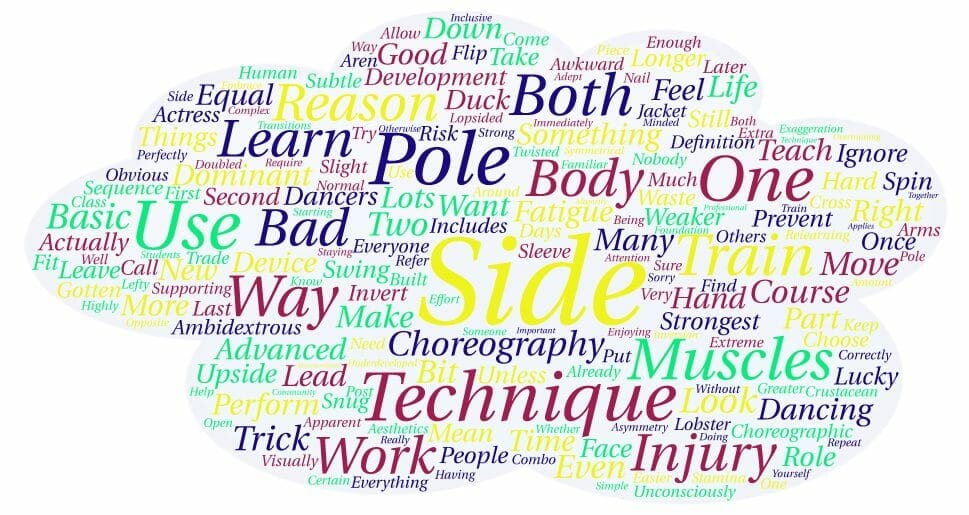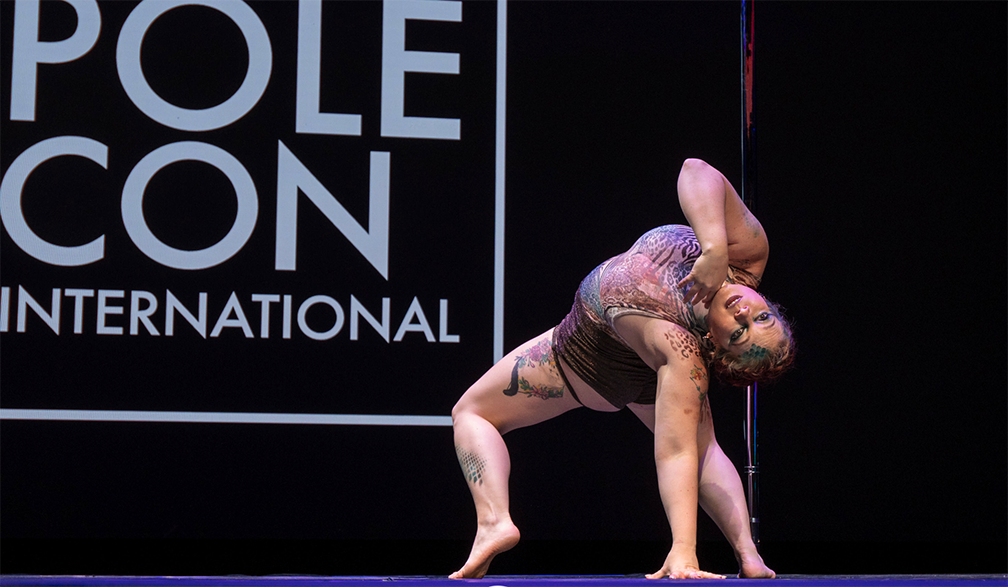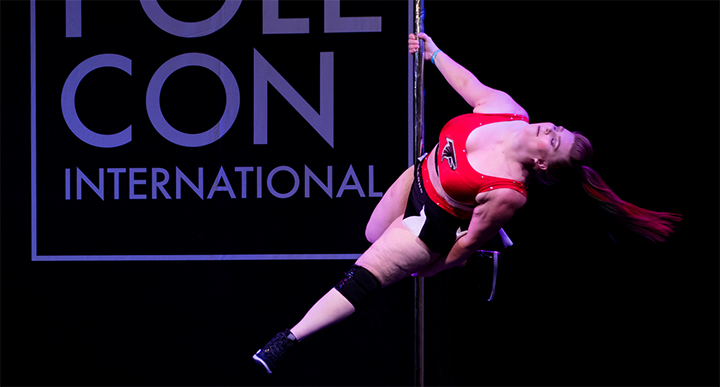Overtraining is defined as: “when the body is subjected to excessive physical stress without adequate…

Swinging Both Ways
Do you swing both ways? On the pole, I mean. Everyone has a dominant hand/side that we unconsciously choose to do almost everything in life and this includes pole dancing. You learn every spin, every invert, every technique leading the way with your dominant side — your good side — leaving your weaker side the role of supporting actress.
(Well, unless you’re ambidextrous, you lucky duck.)
Let’s face it, nobody wants to train their bad side. Pole dancing is hard enough when using your strongest muscles. When learning something new you want to be able to get the technique right, so you use your strongest muscles and once you’ve gotten it right you want to learn something else new. Training your bad side feels awkward and it takes longer to perform techniques correctly. Why waste time relearning something you can already do on your good side?
Actually, there’s lots of good reasons why:
 Development – This meme sums up the development point of my argument. The crustacean might be a slight exaggeration, but only training one side will lead to lopsided-muscles. This can be visually obvious — like the shellfish — or more subtle, yet still apparent to you. Is that jacket feeling snug, but only in one sleeve? The human body is not perfectly symmetrical, but we can prevent extreme asymmetry. Of course, this is not just about aesthetics; using some muscles much more than others can leave the underdeveloped muscles at a greater risk for injury.
Development – This meme sums up the development point of my argument. The crustacean might be a slight exaggeration, but only training one side will lead to lopsided-muscles. This can be visually obvious — like the shellfish — or more subtle, yet still apparent to you. Is that jacket feeling snug, but only in one sleeve? The human body is not perfectly symmetrical, but we can prevent extreme asymmetry. Of course, this is not just about aesthetics; using some muscles much more than others can leave the underdeveloped muscles at a greater risk for injury.
Fatigue – The flip side of equal development is equal fatigue. When you only use one side of your body, you’ll feel it, immediately and in the days to come. If you trade off which side you’re working, your stamina will last longer and you’ll be able to move your arms later, too.
Injury – This is actually a two-part reason: 1) Overtraining can lead to injury. Working your weaker side is basically built-in cross-training. 2) Should you find yourself with an injury that prevents you from your normal pole dancing, having a foundation of using your bad side can allow you to keep enjoying your pole time.
Advanced techniques – How many advanced tricks require only the one side of your body to be strong? Not many. And when you’re upside-down and twisted around the pole you may need to call on some body parts that aren’t used to the attention. If you can perform basic techniques on both sides, moving into more advanced things will be easier.
Choreography – This is also a two-part reason: 1) Of the 16 choreographic devices that there are, the device inversion can refer to upside-down or lateral (opposite-side). While pole dancers are very familiar with the first definition, the second definition is also highly useful. Take one sequence, repeat it starting on the second side, and you’ve just doubled the amount of your choreography without any extra work. 2) Whether it’s a simple combo in class or a complex professional piece, being adept on both sides is really important when performing someone else’s choreography. The choreographer has put time and effort into making a sequence look a certain way and to say, ‘Well, sorry, but I don’t do that on the other side,’ is ignoring their hard work. Even if you can’t nail a trick on your bad side, you should still try it. Staying open-minded about other people’s choreography will teach you new ways to look at techniques and transitions and how things can fit together.
Teaching – The majority of people are right-handed, but pole is an inclusive community and we want to embrace our lefty dancers! Teaching techniques on both sides will help all your students learn with their dominant hand. (Of course, once they know what they’re doing, make sure they train their other side, too!)
If not even one of the aforementioned reasons applies to you, then ignore this post. Otherwise, swing both ways!
Latest posts by April Rayne (see all)
- Choreographic Devices - July 21, 2017
- Choreography 101: Improv - July 7, 2017
- Quiz Time!: What’s Your Pole Style? - April 21, 2017


